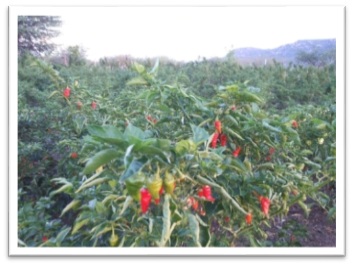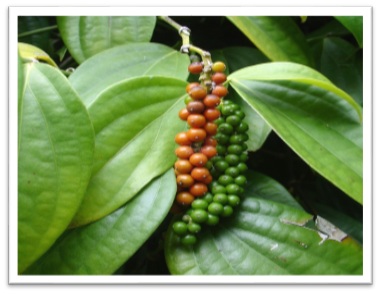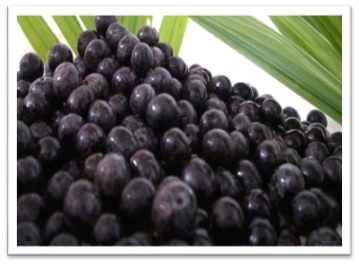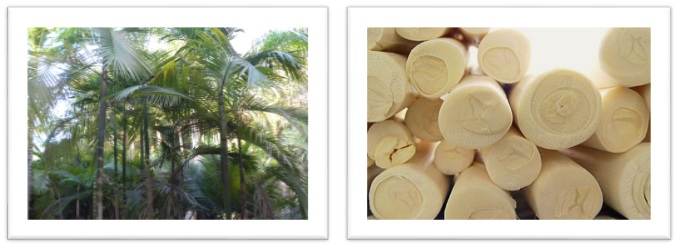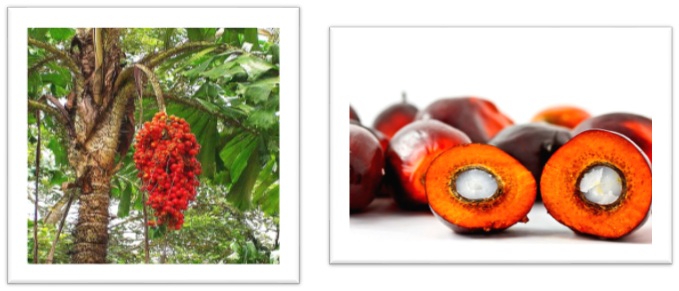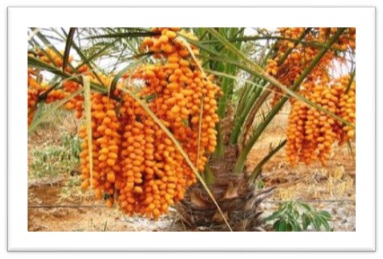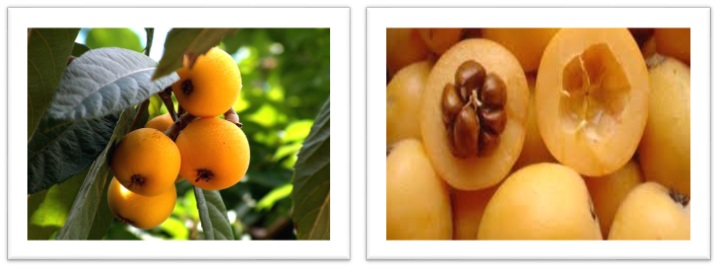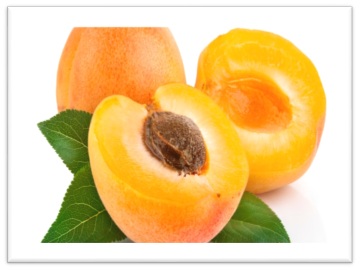THE PLANTING PEPPERS OUR OBJECTIVE
The purpose of our project and do an agribusiness with various products highly commercialized in the world. We will have as our main product marketing peppers sauce and pickled peppers. The company to be formed will have the responsibility to make the plantations, manufacturing, distribution and sales of organic sauces peppers, handmade and decorated.
PLANTATIONS – Seeds are selected with world-class quality. Peppers will have more spicy and mild flavors. They will be consumed in Brazil and abroad. The planting will be in northeastern soil excellent appropriate and favorable condition for a successful development of production. The soil is very fertile for being free of any cultivation for decades due to lack of rain.
CROPS – With the lack of opportunities and poor job creation, we are generating financial revenues in crops of peppers, contributing to the growth and socioeconomic development of the region. We will be forming a social and economic program of great importance self-sustaining.
The peppers, we adopted like cultivation flagship of our project. They adapt very well to the semi -arid climate. Its has a demand and good acceptance in domestic and foreign trade. We had wonderful experiences in peppers growing in the northeastern where the weather and totally favorable production can be done on a large scale.
BLACK PEPPER
Pepper Kingdom or black pepper and the most popular spice in the world is native to India and has been used since ancient times. It was so valued were often used as a form of currency and was sometimes called ” black gold.” It was also used medicinally.
The plant begins to produce and only the third to fifth year of cultivation, and may thereafter produce two crops per year in suitable climates, for up to twenty years. The fruits are harvested in accordance with the type of pepper to be obtained.
According to IBGE, the Brazilian Institute of Geography and Statistics, in 2012 the Brazilian production of black pepper kingdom was 43,000 tons in 19,400 ha, standing out as producing the states of Pará , Espírito Santo and Bahia, responsible by 75 %, 15 % and 9 % of national production respectively.
Being a product marketed in the international market (commodity) in years favorable price culture offers high profitability even in small crops, with an excellent diversification option for producers. To confirm this fact, is quoted in only 2,400 ha planted with the crop in the state of Espírito Santo, black pepper kingdom has been consolidated as the third export product of the state agribusiness, and in the first half of 2014 the exports have reached US $ 38.4 million.
It is a medical food. One study also found that black pepper and saffron consumed together in a normal amounts, was able to destroy the stem cells of breast cancer. These cells are much hard to be destroyed with chemotherapy.
Black pepper helps the digestive system:
pepper prevents water retention :
pepper help to stop smoking :
pepper is a United Anti- Bacterial Agent :
OLIVE TREE
Our project believes in the dream to transform our reservation in northeastern backlands in a lush place of great admiration and pride not only for the Brazil, for example over several locations under similar conditions anywhere in the world. We want to win barrier and naturally adapted native plants of other adverse regions to our reality.
The Olive tree and other crops will be our challenge. As in other countries, Brazil is also increasing the number of people who are worrying more about the health to ensure physical and mental well -being. Many Brazilians are prioritizing a balanced diet, giving preference to the consumer products with more beneficial properties to health.
Used by man for thousands of years, the olive tree had its commercial planting started here in the nineteenth century and became the target of Brazilian research from 1948 in Rio Grande do Sul. Only seven decades later, in 2008, the first extraction occurred genuinely national oil when the Agricultural Research Company of Minas Gerais (Epamig) and Embrapa Temperate Climate started to bottle the product, rich in unsaturated fatty acids, which are beneficial to increase levels of HDL, the good cholesterol.
The promising national oil consumption is stimulating for new entrepreneurs of the field. The market still needs to grow a lot to be able to supply our domestic market. Currently we need to resort to import because we do not have a Brazilian production enough to our domestic market. Brazil is in the top positions of major oil buyer on the planet.
From the third year of planting, with a full load in the seventh year. However, lack of irrigation or interference from other factors can delay fruiting for several years. Mature olive trees become black with soft and buttery flavor. There oils, however, are made from the blend of black and green olives spicy flavor, which are harvested during the color change.
With international help and techniques used previously in similar conditions to our climate and soil in another country, we believe we have a promising production. The olive oil is a genuine product of great demand in the domestic market. Idealize our products will be produced with high quality standards.
COCOA
The civilized world has known the existence of cocoa and chocolate after Christopher Columbus discovered America. Until then, they were the privilege of the Indians who lived in southern Mexico, Central America and the Amazon basin, where cocoa was developed naturally through the forest. Today, almost five centuries later, cocoa products are consumed in many ways, in almost all countries, and are part of the life of modern man. Are present everywhere: in the backpacks of soldiers and bags of students in the high nutritional value of chocolate bars; the most sophisticated beauty salons, in various forms of cosmetics; and social meetings, through wines and liquors. Their waste is used as fertilizer and feed for animals.
It also came from the Amazon jungle to conquer the world, cocoa come a long way. Its history surrounded by legend is marked by curious episodes, it was used by the Aztecs as currency and for a long time it was a unique beverage of the most sumptuous courts of Europe. Its seeds taken to other regions and continents, formed large plantations that today an important source of employment and income for millions of people.
In addition to its flavor and exceptional quality. The fat used in the manufacture of food products with milk chocolate. Consistencies and different flavors there are many ways important for marketing cocoa sales to be professionally exploited by producers.
The first is the ecological appeal, attributed to the fact that the cacao growing a crop maintainer of environmental balance, to demand the preservation of native forest to its shading favoring its adaptation to the fragile ecosystems of the humid tropics Brazil is 5 ° cocoa producer in the world next to the Ivory Coast, Ghana, Nigeria and Cameroon.
Your marketing is a leader anywhere in the world.
THE SOURSOP
It is a popular fruit in northern and northeastern regions of the country, only in recent years has become more known among Brazilian states of Central South. Family Annonaceae, the same as the Earl of fruit, cherimoya, the biribá, among others, the soursop (Annona muricata L.) was brought here by the Portuguese in the fourteenth century, although it should be given to the Spanish explorers credit for dissemination of the plant by the tropical areas of the planet.
Its origin, however, is Central America and Peruvian valleys, especially the production of Venezuela, the highest among the countries of South America. Here, in the states of Alagoas, Bahia, Ceará, Pernambuco and Pará stand in traditional farming, and the western state of São Paulo as an area that is gaining more space in the planting of soursop in the last decade.
The fruit has an oval shape, with the peel in dark green and covered with “thorns”. The inner part is formed by a white pulp with slightly sweet taste and a slightly acid being used in the preparation of vitamins and desserts. Its scientific name is Annona muricata L. and can be purchased in markets and natural food stores.
The soursop is used to treat diseases such as gastritis, ulcers, obesity, constipation, diabetes, digestive problems, liver disease, hypertension, depression, insomnia, headaches, colds, worms, diarrhea and rheumatism.
The properties of soursop include its diuretic, sedative, antispasmodic, anthelmintic, expectorant, astringent, vitaminizante, anti-inflammatory.
The National Cancer Institute in the United States in 1976 was proven that the power “chemotherapy” the soursop on cancer cells is 10,000 times that of compound called Adriamycin, one of the most aggressive cytotoxic currently employed in chemotherapy In Brazil is a fruit quite popular in the market and consumer.
It fits very well the mood of the northeast. The production is guaranteed due to the climate and suitable soil it produces with quality and excellent flavor.
THE AÇAI
Açaí (Euterpe oleracea) is a palm tree that produces a fruit frequently used in the manufacture of food and beverages.
The term “acai” comes from the Tupi yasa’i, “fruit that cries”, an allusion to the loose juice for its fruit
Typical of the northern region plant, the açaí palm is responsible for the production of açaí, which is much appreciated and consumed in Brazil, especially in the summer. The Acai berry is a raw material for the manufacture of ice cream, ice lollies, jellies, drinks and energy foods. The açaí fruits all year, especially between July and December, during which the production is intensified.
The producer can control the açai plantation so that they bear fruit intensely also in the first half of the year. In the off season, the fruits are more valued in the market, providing a good profit margin to producers during the marketing.
In recent years the acai consumption increased steeply not only in the North, but in Brazil and in several countries in Europe and the United States. At present the Brazilian production of açaí meets precariously demand of domestic and foreign markets. Due to high demand and low domestic production.
This high demand for fruit açaí has served as an incentive for some local investors start planting in small, medium and large scale. In the current context of increasing consumption, the return on investments made in acai plantations is almost certain given that the Brazilian production potential market.
The northeast of Brazil and responsible for high consumption of acai to be a food very energetic and beneficial to health. It´s has the wonderful properties, preventing disease and leaving the body healthy and with a lot more energy.
PALM HEART JUSSARA
Nome Científico: Euterpe edulis
Sinonímia: Euterpe globosa, Euterpe equsquizae
Nomes Populares: Palmito-jussara, Açaí-do-sul, Ensarova, Içara, Iiçara, Inçara, Iuçara, Jaçara, Jiçara, Juçara, Jussara, Palmeira-juçara, Palmeira-jussara, Palmeiro-doce, Palmiteira, Palmiteiro-doce, Palmito, Palmito-branco, Palmito-da-mata, Palmito-doce, Palmito-juçara, Palmito-vermelho, Ripa, Ripeira
The palm heart Jussara is a native palm of the Atlantic Forest and known primarily for its edible palm hearts, which is much appreciated. Its sleek stipe is slender, cylindrical and unique, that is, it does not form clumps, or presents regrowth capacity after cutting, which always causes the death of the plant. Its size is average, reaching an average of 5 to 10 meters high and 15 cm of stem diameter. Production of palm hearts lasts for 12 years to be consumed.
The palm Jussara is an elegant and beautiful palm tree, which is still little explored in landscaping. It lends its tropical beauty to various types and designs of styles, and can be conducted alone or in woods. It does not require much space and is a special attraction for birds in the garden. It is also an election tree for recovery of riparian forests and other areas of reforestation of the Atlantic Forest that is already populated with pioneer species.
The palm production is known for excellent quality, with high economic value and widely consumed in food. However it is mono stem and cutting means his death. With the death of the palm tree, its many products are available: fiber for brooms, rafters, battens for civil construction, leaves for temporary and foraging coverage. Recently, the processing of the fruit, use in landscaping projects and the recognition of the therapeutic properties of its roots have been widespread. Currently, a highly viable and growing study and practice is the processing of fruit pulp of palm juçara, getting a drink composition known as acai juçara enough market demand.
PALM OIL
Palm oil, dendém oil or palm oil is a popular oil in Angola Brazilian cooking is produced from palm tree fruit known as Oil Palm (Elaeis guineensis). Indispensable in the african-Brazilian cuisine, is used in dishes such as pigweed, vatapd, acarajé, shrimp bobo, abará, among others. In Angola, it is used, for example, in addition to culinary use, palm oil can also replace diesel oil, although it is much more expensive, and also rich in vitamin A. It is used in soap and candle for protection of tinplate and steel, manufacturing of greases and lubricants and vulcanized articles. The oil extraction process can be handmade.
Palm oil contains equal proportions of saturated fatty acids (palmitic acid 44% and 4% stearic) and unsaturated (oleic and linoleic 40% 10%). It is a natural source of vitamin E, tocopherols and tocotrienols that act as antioxidants. It is also rich in beta-carotene, an important source of vitamin.
A. The palm oil is reddish due to the large amount of vitamin A, 14 times higher than the carrot. However, heating the oil for frying destroys vitamin A and letting the white oil.
The palm oil prices recorded sharp rise in Malaysia purse oleaginous reference market. The futures contract with greater liquidity rose 1.1% and closed at 20.73 cents per pound. Over the past 30 days, the cumulative increase reached 9.5% -and analysts said new valuations will come.
Another sign that it is a “new” market, the other being shaken by the wave of plant fuels. Begins to gain even more body to attract new investments and to offer a price volatility that often appeal to speculators. And splash this transformation also rocked by the increased food consumption can benefit Brazil, until now only a shadow in a segment traditionally dominated by Asian countries.
It is a product of very good acceptance in the market and in various area of industry, being rich in various commercial aspects.
RUBBER TREE
Hevea brasiliensis L. Known by the common names of rubber or rubber tree, is one of the Euphorbiaceae family tree. Presents compound leaves, tiny flowers and gathered in large panicles. Its wood is white and light and its latex is manufactured rubber. Its fruit is in a large capsule with seeds rich in oil, which can serve as raw material for resins, paints and varnishes. Being nutrient-rich seeds are used in the production of food supplements.
The worker removes the latex from the rubber tree is called the rubber tapper.
The rubber tree is a native tree of the river basin of the Amazon River, which existed in abundance and exclusivity characteristics that generated the extraction and called rubber cycle, a period of Brazilian history a lot of wealth and strength to the Amazon region. The species was introduced in the state of Bahia in Brazil, around 1906.
Currently, the state São Paulo is Brazil’s largest producer of natural rubber shown by statistics. Recently, the demand for rubber has grown tremendously due to the material quality compared to fossil materials and concern for the environment. Although new states such as Mato Grosso are also producing rubber, Brazil only produces 35 percent of what it consumes, that is, much of the rubber consumed is imported.
The market of rubber, besides being guaranteed is still very profitable. The initial investment for one hectare of rubber plantation, with the hiring of labor, fertilizer, seedlings and technical services, is approximately R$4,000.Then to the start of production that takes seven years, spending is only maintenance that is around R$ 1000 per year. The life cycle of a rubber tree is over 30 years after bleeding begins, during which the producer begins to receive up to R$ 10,000 per tree per year. And yet it is an industry that provides income for over 40 years, with a very long cycle of culture.
LEMON
Fruit of the most popular in the world, lemon, in their most varied types, reservation rich nutritional sources for our health. Versions most consumed in Brazil are, Tahiti, cloves, Galician and Sicilian. Get to know the characteristics of each one and its benefits.
One of the most powerful fruits used in food, both sweet recipes like savory, the variety of lemons comes approximately a hundred species worldwide. Rich source of vitamin C, food is an important ally to our health. Therefore, we selected the four most widely consumed types in Brazil to present their features and benefits.
Tahit i- is less acid and more found in the country. To identify it on the market is easy. The bark is thin and is one that has few seeds, more rounded shape. To be quite juicy, it is ideal for lemonades and drinks as caipirinha.Cravo or bumpkin. It has very distinctive flavor and is also known as pink lemon. Lemon peel is very good option for meat and salad dressing.
Galician – Is that “lemon” smaller, with thinner bark and light green, well-rounded shape. But do not be fooled by the size, though small is very juicy. The acidity is not very strong, which makes this type suitable for a wide variety of recipes. Ice cream, sauces, seasoning, drinks, sweets and juices.
Siciliano – This is the “true” lemon! The world’s oldest, is also known as Eureka or Lisbon. Its bark is yellowish and very thick, and its shape is elongated. It is not very juicy like the others, and its flavor is very acid, which makes it ideal raw material for sauces and saborizar full of personality dishes like risotto. It has a search in an extraordinary market. And excellent chance of sales.
DATE
The date palm (Phoenix dactylifera) is a palm extensively cultivated for its edible fruits, dates. Due to be cultivated for millennia, its natural area of distribution is unknown, but is originally from the oasis of the desert area in North Africa, although there is to admit an origin in Southeast Asia. It is a medium-sized palm tree, 15 to 25 m tall, with multiple trunks sharing the same root system, but generally growing isolated. The leaves are pinnate fronds with up to 3 m long, with thorny stem and about 150 leaflets. Each leaflet is about 30 cm long and 2 cm wide. In Brazil, due to growing conditions found in the Northeast, the date palm is grown quite successfully.
The date is a tasty fruit rich in sugar, and widely used in the production of liquors and jams, as well as being widely applied in the manufacture of syrups expectorants. It can also be the raw material in the production of alcohol and vinegar, among other possible uses.
There are many varieties being generally the date palms begin to bear fruit after the second year, when grown in the Northeast. In some cases, depending on the variety, the production starts only in the fourth year. Propagation is usually done with puppies that come in the palm stem. These plants are considered very good, since they have the same palm-mother’s qualities. It can also be propagated in seedlings grown from seeds. These seedlings are grown in nurseries and are ready to transplant in a year.
In Brazil’s Northeast region to date palm has adapted so well that, in general, fruits at two years of age. This is a huge precocity. To get an idea, the date palm in its region of origin, fruits to eight years old.
In addition to presenting a great precocity in northeast Brazil, the palm trees also are more resistant to wrinkles and disease, suffering, only with some fungi that attack the leaves but not enough to cause damage to the production of fruit. In its composition, we find iron, phosphorus, calcium, protein and vitamins A, B1, B2 and C. A striking feature on the date of the composition is the fact that it is rich in potassium. When the natural energy value is 178 calories in each 100g. When dried out, the caloric value of the date is much higher, reaching more than 310 calories for each fruit 100g.
The date produced in northeastern Brazil fouled being very welcoming to the animals, it would be great news to the Brazilian homes and with great acceptance and demand.
LOQUATS
The loquat (Eriobotryaiaponica) is a species of the subfamily Maloideae, the family Rosaceae. Despite its name, it is native to southeastern China. Its fruit, called the loquat is also called yellow plum in Brazil and magnório in northern Portugal. It is a small tree with a rounded crown, short trunk. It can grow up to 10 m high, but is usually smaller. Its leaves are alternate, simple, 10-25 cm, dark green, rigid texture and a serrated edge.
Different from other fruit trees, the flowers appear in the fall and early winter and its fruits ripen in late winter and early spring. The flowers are about 2 cm diameter, white, with five petals, produced in clusters with three to ten flowers.
The loquat is comparable to the apple in many aspects, such as the presence of high sugar content, acidity and pectin. It is consumed fresh and blends well with other fresh fruit or fruit salads. Because they are firmer, the slightly immature fruits are best for pies. Fruits are also very used for jellies and jams are appreciated in. One type of loquats in syrup is used in traditional Chinese medicine as expetorante to soothe the throat. Loquat can also be used to make liquor or wine. The loquat trees are easy to grow and, therefore, they are also grown as ornamental trees.
The loquat fruit can be consumed in the form of fresh fruit, fruit juice or in the manufacture of foods such as pies, cakes and gelatin. The time of loquats is from March to September, and the state of São Paulo one of the largest domestic producers.
The benefits of loquat, also known as Japanese plum and prune, it strengthens the immune system because this fruit has many antioxidants and improve the circulatory system. Combat fluid retention, as they are diuretic and rich in water. Help you lose weight by having few calories and is rich in fibers that help control appetite. Fight cholesterol. Reduce constipation due to high fiber content. Protecting the mucous of the stomach and intestine. Help fight respiratory diseases because it has antioxidants that help in the anti-inflammatory response of the body.
DAMASCUS
The apricot (Prunus armeniaca, “Armenian plum” in Latin, synonymous Armeniacavulgaris) is a tree famíliadas rosettes that reaches from 3 to 10 meters high. It has heart-shaped leaves or ovate, serrated and red petiole; flowers solitary or twin, pink or white; and subglobosas drupe with a characteristic median groove, yellow or orange, with fleshy and juicy pulp. It is known in northern China since 2000 BC edible natural and internationally consumed as dried fruit and cand.
It has the feature as a summer plant (also known as apricot) can be found widely throughout the year, either canned form, fresh or dried. It presents difficulties of adaptation in Brazilian soils, preferring cold climates. There are studies that have proven the existence of more than 50 different species of this fruit, which in its dry state is extremely rich in fiber and iron, however, in contrast, apricot in this state becomes more calories (about 250 calories each 100g), while the same in the fresh state and in the same amount comes to represent only 35 calories. Even so, the more calories is still recommended for health issue due to its high concentration of nutrients and various medicinal properties.
How curiosity of many, the apricot is yes peach family. However, accompanying some features that set it apart as its smaller size and its flavor a little more acid than the other.
As an active principle is strongly present vitamin A, thanks to the existing beta-carotene in its composition, a substance that is able to strengthen the immune system, is antioxidant, as well as beneficial for eyes and skin. Still speaking their chemical compounds can find other vitamins such as the E, B1, B2, B3, B5, B9, C, and also lycopene (effective in preventing the proliferation of cancer cells, heart problems in general and potential laxative).
Laetrile is another vitamin that can also be found in this fruit, being present in its core. It can be important for medicine because of its invigorating mobile power

